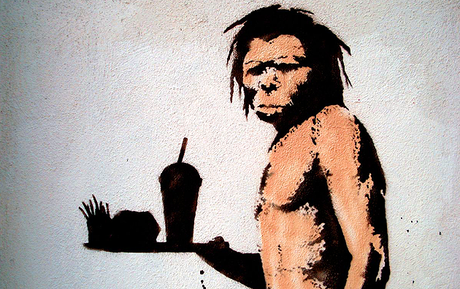When thinking about hunter-gatherers, anthropologists and laypeople alike tend to assume that they are descended, in an unbroken line, from ancestors who were also hunter-gatherers. Because it is foraging for turtles all the way down, hunter-gatherers come to be romantically seen as Paleolithic exemplars: isolated groups who somehow stalled in cultural evolutionary progress. This of course is not the case. Few, if any, historically and ethnographically known hunter-gatherers were ever isolated or static in this imaginary way. Moreover, there are several known (and presumably many unknown) instances in which planters abandoned that lifestyle and went back to foraging. Several Plains Indian tribes (such as the Crow, Lakota, and Cheyenne) are examples of this.
Yesterday I was reading a paper, Hunter-Gatherers and Their Neighbors from Prehistory to Present, which persuasively argued that foragers are always “parts of complex regional systems tied together by trade, exchange, and politics” and that “for several thousands of years the environments of most hunters and gatherers have included surrounding agriculturalists, pastoralists, and in many cases kingdoms and empires.” Perhaps the only exceptions to this were the northernmost polar Eskimo and the island-isolated Tasmanians. But these aside, no hunter-gatherers have ever been isolated and efforts to reconstruct a pristine, pre-contact forager world is a fraught enterprise:
It is Wobst’s view (1978:303-304) that “all hunter-gatherers in the ethnographic era were intimately tied into continent-wide cultural matrices but that the “literature is remarkably silent” on this because anthropologists have done a kind of “salvage ethnography on them, trying to reconstruct the “imaginary point in time when the studied populations were less affected by culture contact.” In short, Wobst says, anthropologists have filtered out behaviors involving interaction between hunters and their surrounding nation-states, and therefore “the ethnographic literature perpetuates a worms-eye view of hunter-gatherer reality.”
This is an apt observation which applies also when we are talking about hunter-gatherer or “animist worldviews.” I think we sometimes fall into the trap of treating these worldviews as pristine, having autochthonously evolved in some isolated place that became stuck in time. This is surely not the case. When considering these worldviews, we should keep in mind that they have been developing for just as long as all other worldviews (and are therefore “fully modern”), and that this long period of development entailed change and transformation. Worldviews are never static and are always changing due to internal innovation and external contact.
In the reply section to the paper, one reviewer perceptively touched on these issues:
In some cases [our conceptual difficulties] may reflect the fact that a hunting and gathering population is descended from food producing ancestors. Many anthropologists, no less than laypersons, evidently find it difficult to believe that a food producing society could “revert” to a hunting and gathering economy. This attitude — which often flies in the face of considerable evidence to the contrary — almost certainly owes its strength to the depth and significance of the idea of progress in the Western world.
Our idea of progress is of course directly tied to form of economy and size of society. We equate complex economies and big societies with progress, and assume that everything else — including animist worldviews, are non-progressive or “primitive.” This is a gradistic assumption and, as I noted here, it’s wrong.


